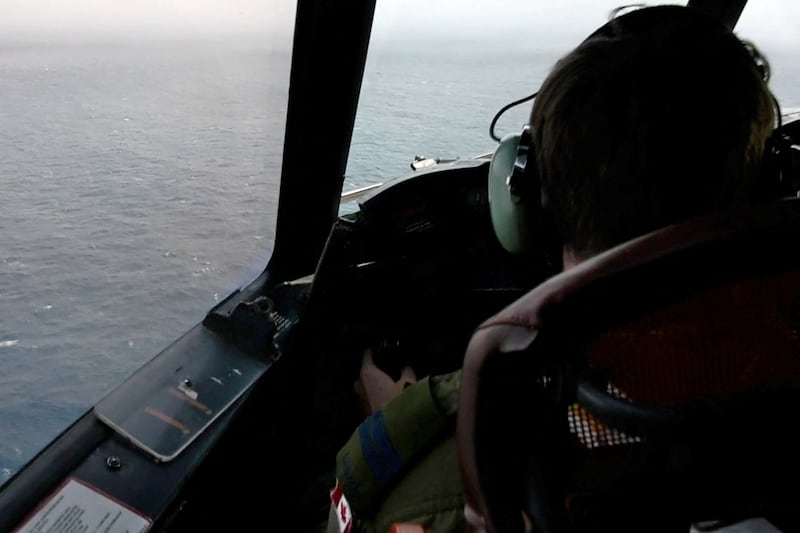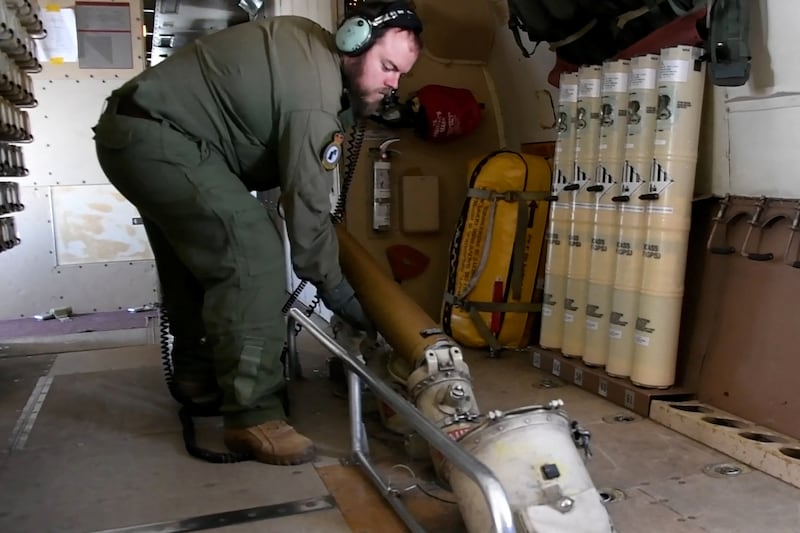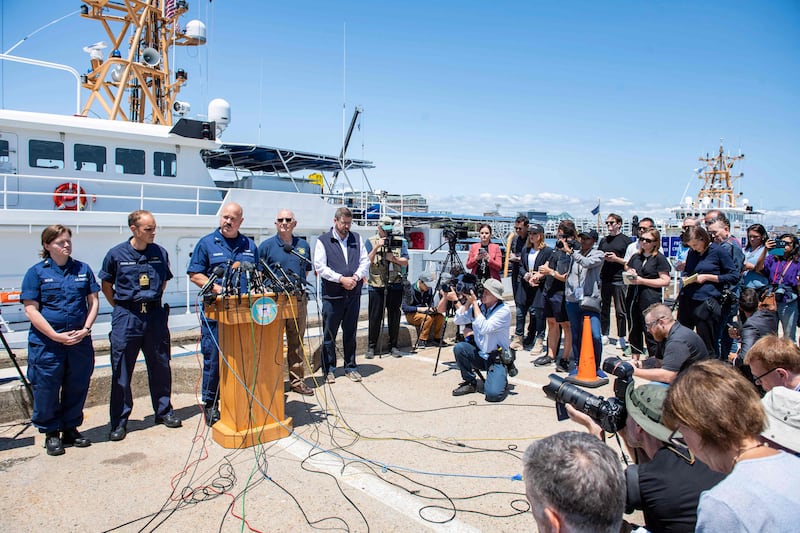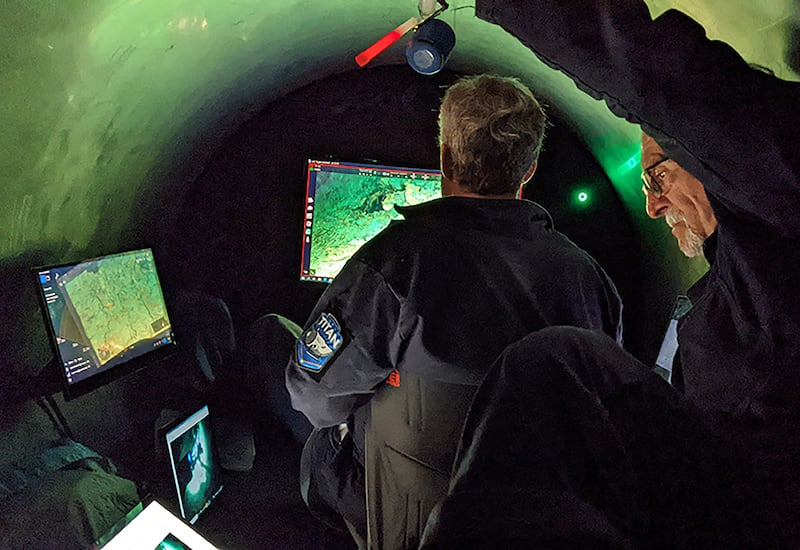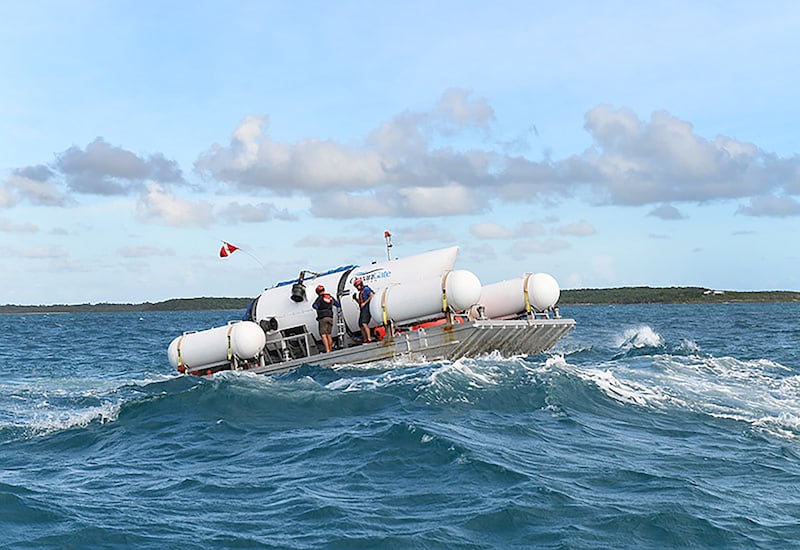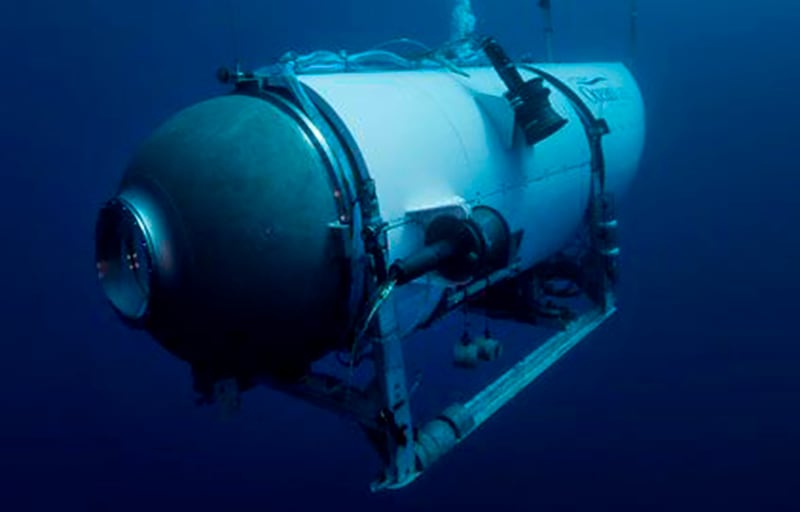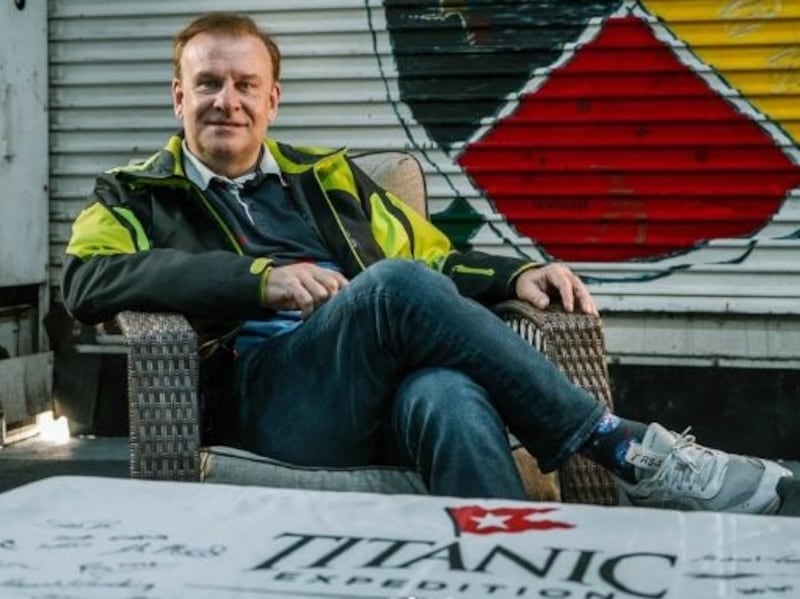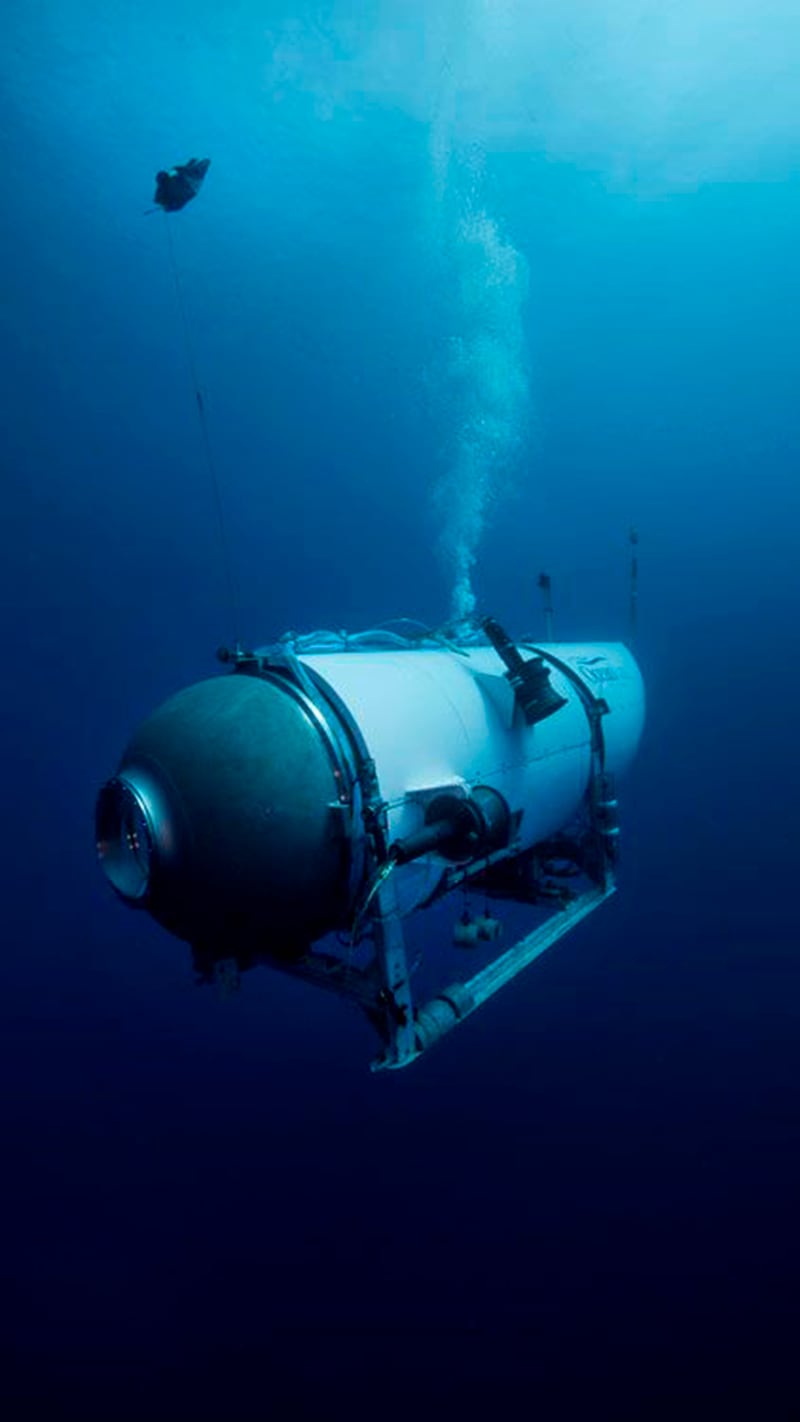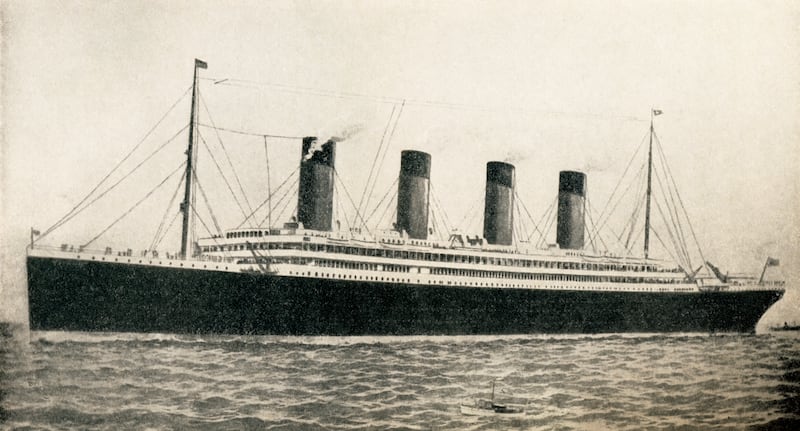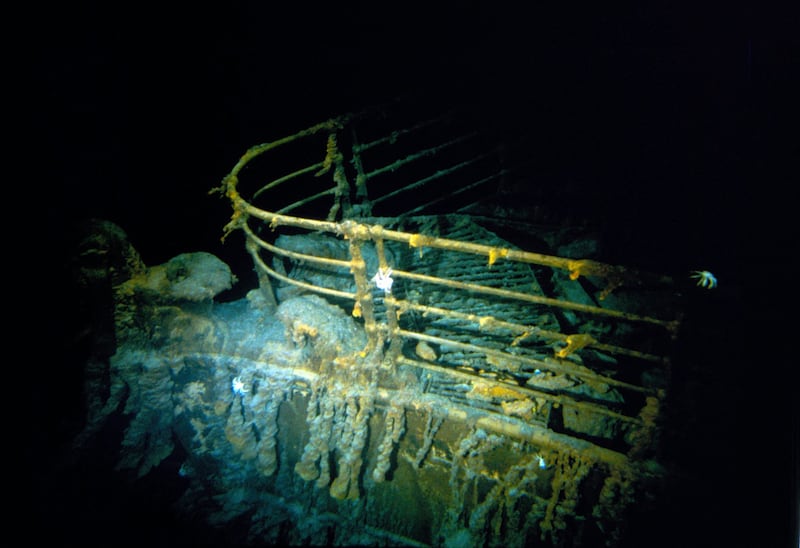Follow the latest news on the missing Titanic sub here
A businessman who explored the Titanic on the missing Titan submersible has dismissed safety concerns related to the vessel, and said he experienced no problems during his “amazing” trip last year.
UAE-based Oisin Fanning, who was accompanied on the trip by two of the crew members currently on board the missing craft, spoke about his own experience of visiting the wreck, which lies about 3.9km below the surface.
He spoke about his own experience on the craft and said he did not feel unsafe at any point, dismissing concerns which have emerged about it in recent days.
The single window craft, a 22ft tube with no seats, has one toilet and only a curtain for privacy and is steered using a modified Logitech games controller.
“It’s a highly strong composite. It doesn’t crack,” said Mr Fanning, the chief executive of UK-listed oil and gas exploration firm San Leon Energy.
“That’s why you can’t get out of it. The dome is sealed solid. There can’t be a leak.”
Mr Fanning was responding to reports that former employee of OceanGate raised concerns over the safety of the vessel in an engineering report in 2018.
David Lochridge, OceanGate’s director of marine operations, wrote that the craft under development needed more testing and that passengers might be endangered when it reached “extreme depths,” according to a lawsuit filed that year in US District Court in Seattle.
OceanGate sued Mr Lochridge that year, accusing him of breaching a non-disclosure agreement, and he filed a counterclaim alleging that he was wrongfully fired for raising questions about testing and safety. The case settled on undisclosed terms several months after it was filed.
The case was just one of several concerns raised about the vessel.
OceanGate also received another warning in 2018, this one from the Marine Technology Society, which describes itself as a professional group of ocean engineers, technologists, policy-makers and educators.
In a letter to company founder Stockton Rush – one of those on board the missing sub – the society said it was critical that the company submit its prototype to tests overseen by an expert third party before launching in order to safeguard passengers.
Mr Rush, who describes it as an experimental vessel, had refused to do so.
Search for missing Titanic tourist submersible continues - video
Search for missing Titanic tourist submersible continues
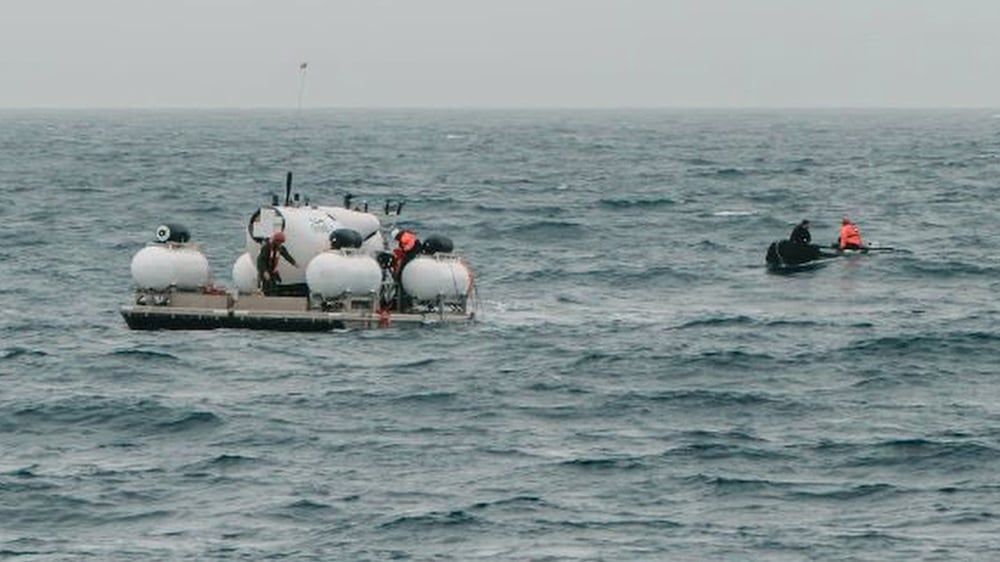
The letter, reported by the New York Times, said society members were worried that “the current experimental approach adopted by Oceangate could result in negative outcomes (from minor to catastrophic) that would have serious consequences for everyone in the industry.”
In a 2019 interview with Smithsonian magazine, Mr Rush complained that the industry’s approach was stifling innovation.
“There hasn’t been an injury in the commercial sub industry in over 35 years,” he said.
“It’s obscenely safe because they have all these regulations. But it also hasn’t innovated or grown – because they have all these regulations.”
Passengers know the risks
Mr Fanning said he underwent extensive training ahead of the trip last year, which he described as “amazing”. He was accompanied by both Paul Henry Nargeolet and Mr Rush, the found of Oceangate, the company that owns the submersible on the dive.
“More people have been in space than have been to the Titanic,” he said. “We knew the dangers of course.
“You are aware of it but you can’t dwell on it. You just have to hope everything goes according to plan.”
He told The National the craft has blankets and other devices on board to remove carbon dioxide from the air to give passengers longer if they need rescuing.
“You can actually see the oxygen levels go up as they are applied,” he said.
“The blankets wrap around you and at the same time as keeping you warm get rid of the carbon dioxide just as an added bonus.”
Another device on board, which uses pellets to remove carbon dioxide from the air, works to extend the amount of breathable air.
Titanic tourist submersible goes missing – in pictures
He said he believed the sub must be trapped, as a safety measure meant weights would automatically release after 24 hours.
“You drop the weights. And if you are incapacitated for whatever reason, the weights drop themselves after 24 hours. They are biodegradable,” he told The National.
“So the only thing preventing them from coming up, honestly, is to be caught on something.
“There’s also another scenario in which they did come up and the boat didn’t see them because they are semi-submersible.
“The only thing that would pick them out is an airplane.”
Passengers need to preserve oxygen
Mr Fanning said those on board would be encouraged to stay calm.
The Titan has five people on board, including Dubai-based British billionaire adventurer Hamish Harding.
The others on board are Shahzada Dawood, his son Suleman and OceanGate’s chief executive and founder Stockton Rush, together with French submersible pilot Paul-Henri Nargeolet.
The 6.7m (22ft) long OceanGate Expeditions vessel is due to run out of oxygen on Thursday.
“The two businessmen concerned didn’t get to where they are by being panickers. So they will be calm and they will be told to be calm and they will conserve oxygen as much as possible until the ship gets down there.
“I am praying that is the case, that they’re just caught on something because that should be alleviated fairly quickly.”
Lure of the Titanic
He said the vessel felt a little cramped during the dive to the Titanic, but the excitement outweighed any discomfort.
“You are looking at state rooms with baths still in them and lights still on the wall,” he said.
“It’s 110 years later and there are lights on the wall that looked like they were polished yesterday. There is some deterioration of course, but there are some areas that just look amazing. You look through a wall that’s collapsed and you see a bath just sitting there.“
There are only six baths on the whole of the Titanic. The captain’s bath was visible but has now collapsed in.”
Jim Bellingham, a pioneer in the field of autonomous marine robotics, who heads the Johns Hopkins Institute for Assured Autonomy and has developed multiple small autonomous underwater vehicles, says the pressure a vessel comes under at 3,800 metres is immense.
“It's over 5,000 pounds per square inch,” explained Mr Bellingham. “It is a lot of weight that is crushing down on every point of the sphere.”
The titan is designed in cylinder shape as opposed to the preferred sphere shape.
“The problem with the cylinder is you have to make the material twice as thick,” he told The National.
Mr Bellingham says he has lost unmanned submersibles before.
“I have lost a lot of underwater vehicles and I found them all again,” he said. Part of his recovery process involved brainstorming all the possible ways the vessel could have become lost, something he says the US Coast Guard has undoubtedly done as well in its search process.
He said he was encouraged by news that a Canadian P3 aircraft picked up banging sound while searching for the Titan.
“You can speculate what has happened is that they dropped a sonobuoy, which are quite sensitive and if they're picking up some banging, there's a chance that that's them. That its people in the vehicle hitting the vehicle trying to get someone's attention,” he said.
The submersible lost contact with the mother ship shortly after embarking on its dive to the wreck site early on Sunday.

